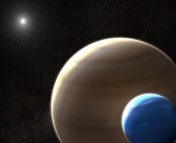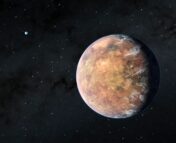Authors: Caleb K. Harada, Courtney D. Dressing, Munazza K. Alam, James Kirk, Mercedes Lopez-Morales, Kazumasa Ohno, Babatunde Akinsanmi, Susana C. Barros, Lars A. Buchhave, Andrew Collier Cameron, Ian J. Crossfield, Fei Dai, Peter Gao, Steven Giacalone, Salome Grouffal, Jorge Lillo-Box, Andrew W. Mayo, Annelies Mortier, Alexandre Santerne, Nuno Santos, Sergio G. Sousa, Emma V. Turtelboom, Andrew Vanderburg, Peter J. Wheatley
First Author’s Institution: Department of Astronomy, University of California, Berkeley, California, USA
Status: Accepted to the Astronomical Journal [open access]
You’ve probably heard about exoplanets, which are planets around other stars, but have you heard of moons around exoplanets? If you haven’t yet, that is because they we do not have any certain detections just yet! Just like there are moons around the planets in our Solar System, including our Planet Earth, it is natural to think that if astronomers have found exoplanets, maybe there could be moons around those planets as well. Hence, the term exomoon was coined. Ever since space telescopes like JWST have started pushing the boundaries of our knowledge of other planets, astronomers like the authors of today’s paper are on the hunt for exomoons.
But you may be wondering, why should we be interested in exomoons? While the common method for astronomers to look for habitable planets is through the concept of the habitable zone, looking for exomoons expands this search to other planets that we wouldn’t think of when searching for life, such as gas giants like Jupiter in our Solar System. Moons around these other types of planets may be habitable as well. For example, moons around planets in our Solar System, such as Europa and Titan are of interest because they have a subsurface ocean and liquid hydrocarbon rivers and streams on the surface respectively, which have implications for habitability. Today’s authors focus on the temperate low-mass Jovian planet HIP 41378 f and seek to show if a hypothetical exomoon could be stable around this planet and if it could be detectable with transit observations. HIP 41378 is a bright, late F-type star, which hosts five transiting planets so far, with planet f being the farthest from its star and having the lowest bulk density of exoplanets by far, which makes it an interesting target for this study!
Cast Beyond The [Exo]Moon
To start investigating whether exomoons could be present in the system, the authors first examine whether it is possible that the planet HIP 41378 f could host exomoons over its lifetime, or whether the gravitational forces of this planet and other planets in the system make a long-term stable orbit too difficult. To do this, they employ various dynamic simulations to test whether satellites could be stable around the planet f given the presence of the other exoplanets in the system. A visualization of these dynamical simulations, usually called N-body simulations, is shown in figure 1.
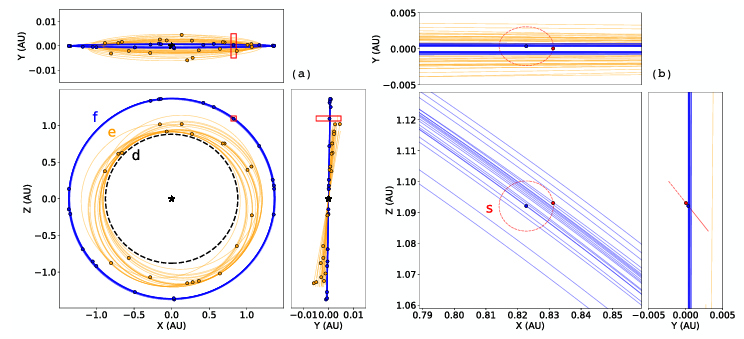
The authors found that HIP 41378 f could potentially host exomoons at the very least as massive as 0.15 times the mass of Earth that are stable over one hundred thousand years. This shows that exomoons can be feasible around exoplanets and presents an opportunity to explore their potential further. But, now that we know that it is physically possible that this specific planet could have an exomoon, could we see it in observational data from telescopes?
Once in a Blue [Exo]Moon
The authors seeked to answer the essential question of: if astronomers observe an exoplanet transit in front of its host star and measure the transmission spectrum for the planet’s atmosphere, would they be able to say with confidence that they have detected an exomoon? To do this, they look at the light curve of HIP 41378 f obtained with the Hubble Space Telescope (HST). This represents the light that we get from the star over time as the planet orbits the star. The authors compared the light curve from the planet without an exomoon with that of the planet with a simulated exomoon and found small effects induced by the exomoon. These results also showed the importance of constraining mass and orbit of planets because it can impact the stability of exomoons over long timescales and can therefore have an effect in observations when trying to detect them. To illustrate this, see figure 2.
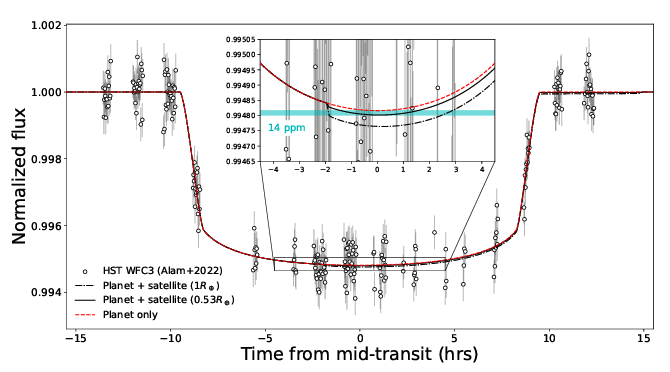
Lastly, the authors then took that HST data and looked at the transmission spectrum for planet f in figure 3. The goal here was to test whether the presence of an exomoon could have implications for the transmission spectrum of a planet, since this is the primary way of detecting atmospheres of exoplanets currently. Through this, they found that existing observations of the system from HST and K2 are not sufficient to reliably constrain and determine whether exomoons could be present, but it highlights the potential of JWST and future space missions for reliably constraining their presence around exoplanets. It also showed that exomoons with potentially thick atmospheres could serve as a point of contamination when deciphering exoplanet atmospheres and that it could be considered in future studies.
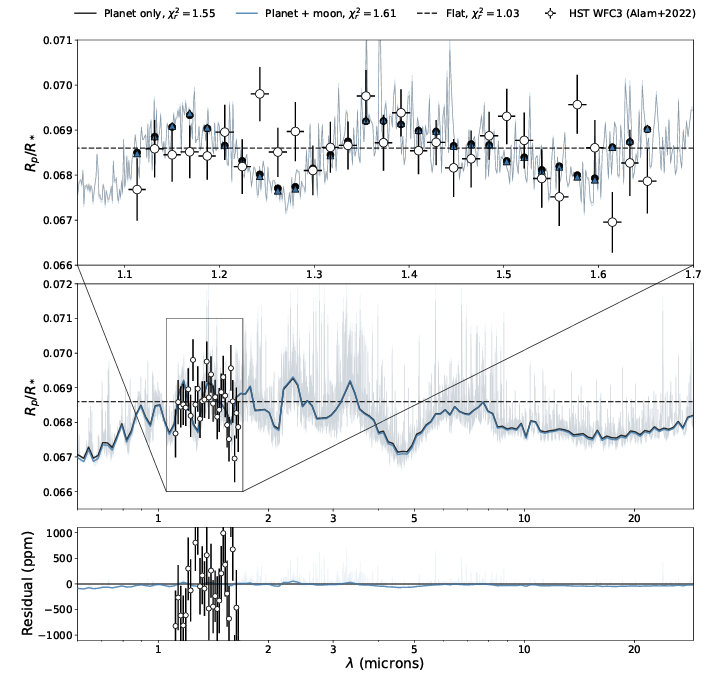
Today’s paper highlights all of the advancements that astronomers have made through exoplanet science, while also showing that there is much more for us to learn in our universe. Will we be able to detect an exomoon in the near future? Maybe with the incredible sensitivity of the latest cutting-edge instruments, such as JWST and future planned space missions, we will find out soon!
Astrobite edited by Lucie Rowland
Featured image credit: ESA/Hubble



